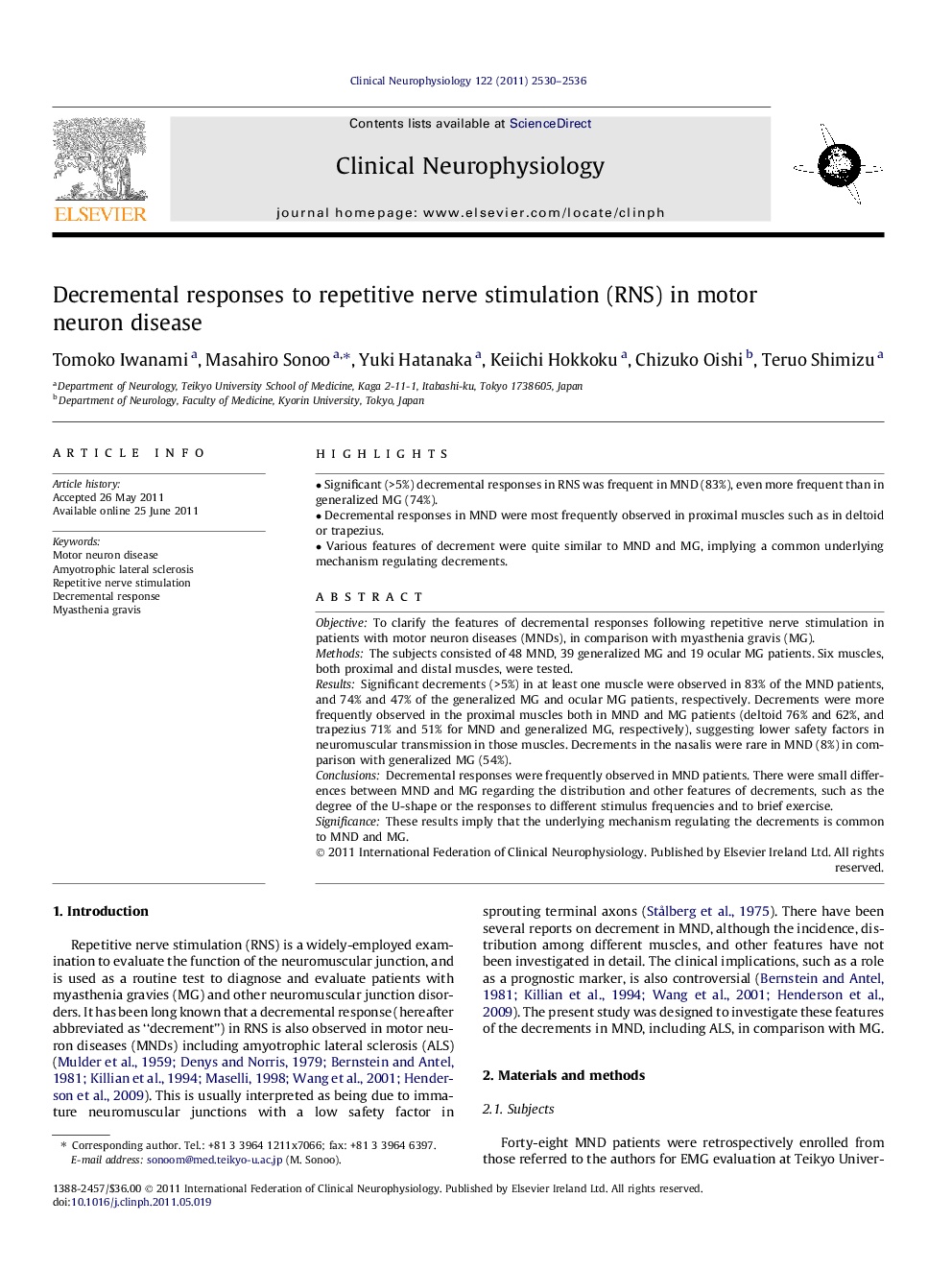| Article ID | Journal | Published Year | Pages | File Type |
|---|---|---|---|---|
| 3043993 | Clinical Neurophysiology | 2011 | 7 Pages |
ObjectiveTo clarify the features of decremental responses following repetitive nerve stimulation in patients with motor neuron diseases (MNDs), in comparison with myasthenia gravis (MG).MethodsThe subjects consisted of 48 MND, 39 generalized MG and 19 ocular MG patients. Six muscles, both proximal and distal muscles, were tested.ResultsSignificant decrements (>5%) in at least one muscle were observed in 83% of the MND patients, and 74% and 47% of the generalized MG and ocular MG patients, respectively. Decrements were more frequently observed in the proximal muscles both in MND and MG patients (deltoid 76% and 62%, and trapezius 71% and 51% for MND and generalized MG, respectively), suggesting lower safety factors in neuromuscular transmission in those muscles. Decrements in the nasalis were rare in MND (8%) in comparison with generalized MG (54%).ConclusionsDecremental responses were frequently observed in MND patients. There were small differences between MND and MG regarding the distribution and other features of decrements, such as the degree of the U-shape or the responses to different stimulus frequencies and to brief exercise.SignificanceThese results imply that the underlying mechanism regulating the decrements is common to MND and MG.
► Significant (>5%) decremental responses in RNS was frequent in MND (83%), even more frequent than in generalized MG (74%). ► Decremental responses in MND were most frequently observed in proximal muscles such as in deltoid or trapezius. ► Various features of decrement were quite similar to MND and MG, implying a common underlying mechanism regulating decrements.
